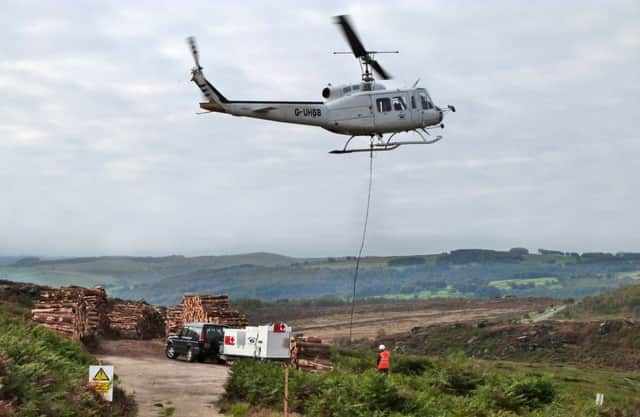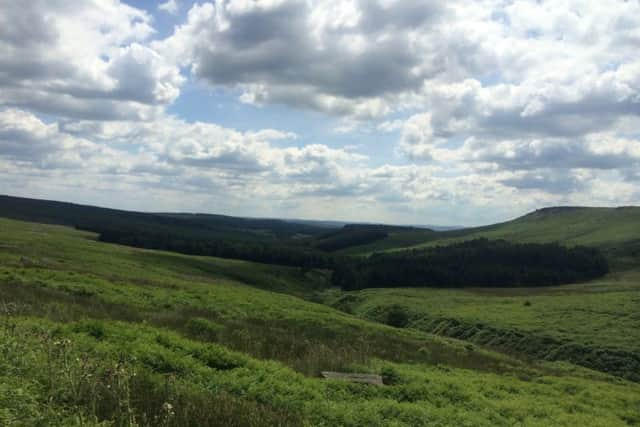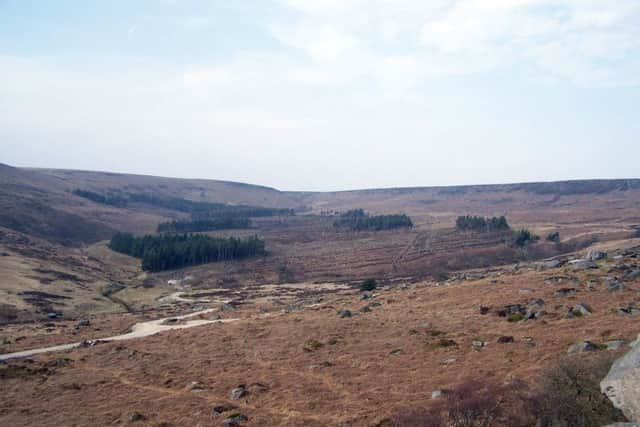The great British bark off '¨as axe falls in valley


Laid down after plans for a reservoir in the Burbage Valley were scrapped for geological reasons, the trees were due to be planted in the shape of Great Britain.
But following the discovery of unexploded ordnance used by the Home Guard as well as Canadian soldiers training in the run-up to D-Day – bullet marks can still be seen on tank-sized rocks now used by climbers – the West Country spur was never completed.
Advertisement
Hide AdAdvertisement
Hide AdLack of funds to manage the 83-acre plantation meant the dense and dark woodland was left to grow until it reached maturity when it was due to be felled as a cash crop.


But because the conifer used was alien to the area, not only were the trees never a true haven for wildlife, but the quality of the timber was so poor that it was not commercially viable.
On top of this, its seclusion meant it was also popular with fly-campers and parties, posing a fire threat to neighbouring moorland.
Now, following a major restoration programme in the valley, about eight miles from the centre of Sheffield, a new chapter has begun. Gone are the trees covering Scotland, Wales and most of England, and instead open heathland and native tree species are being encouraged to make a return on the land which is owned by Sheffield Council but leased to and managed by the National Trust.
Advertisement
Hide AdAdvertisement
Hide AdTed Talbot, countryside manager at the National Trust and formerly woodlands manager for the council, has been among those heavily involved in the restoration project which is not expected to be completed for several decades.


He said none of the trees in the plantation had done well in the acidic soil and no management had taken place.
“This resulted in the existing trees being too crowded to grow well, and trees had started to be blown over within the woods,” he said.
“For this reason, despite the trees being mature, the value in the timber was so poor and the cost of extraction and site restoration so high that there was no viable economic solution for taking this site forward without some form of grant.”
Advertisement
Hide AdAdvertisement
Hide AdThis changed when the Dark Peak became one of 12 in England to be designated a nature improvement area under a programme backed by Defra and Natural England.


It was decided to fell the conifer plantation and restore the area with more sympathetic woodland and heathland. Native species have been planted, although the broadleaved woodland is not expected to be established for around 20 or 30 years.
Mr Talbot said the scheme was not without obstacles as it was five times as big as previous felling projects in the city and carried out in an area which was very popular with visitors.
A study found significant numbers of water vole along the brook, forcing a rethink of the best way to extract timber from the Wales and Scotland parts of the woodland without damaging the habitat.
Advertisement
Hide AdAdvertisement
Hide AdHand felling was carried out on the steep slopes and a helicopter was drafted in to airlift whole trees.


In total, around 8,000 tonnes of timber was felled in the project.
Mr Talbot added said: “With the major capital work over and the site quiet again there is a sense of relief and pride that this complex project has gone so well under the watchful eye of the visiting public.
“For those involved it has been a fantastic and rare chance to be engaged in landscape- scale conservation that will be remembered for many years to come.”